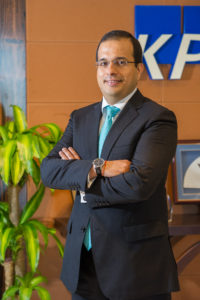Last year saw tremendous growth in the independent food and beverage sector which, coupled with crippling rent increases and shortages of skilled labour, impacted heavily on the large operators, forcing them to consolidate and re-invent, as Michael Gordon discovered
There is no denying that 2015 was a year of tremendous growth and development in the burgeoning food and beverage scene of the Middle East.
There were too many new openings to recollect, but they were most noticeably in the independent sector, with hotel and chain operators experiencing saturation and many forced to consolidate, redesign or re-invest.
Driving that need to consolidate is the increased levels of competition, the soaring cost of rent and the continued difficulties in recruiting and retaining the right staff.
Interestingly, despite its glitzy appearance fine dining is no longer the buzzword, with diners more interested in authentic experiences and, above all, value for money. This has led to the explosion of a new phenomenon, which is the rise of the food truck. While regulations are still unclear, and trucks are left motionless, they are popping up more and more across the city and the greater region.
Al Masah Capital, a leading investment firm in the region, predicted a growth rate in the GCC foodservice at CAGR of 6.8% to reach $24.5 billion in 2018.
Saudi Arabia leads the region, with total foodservice sales of $8.9 billion, accounting for nearly half of the GCC market. The UAE is the second largest contributor, with total sales of $5.3 billion generating 28% share in the region, followed by Kuwait ($1.9 billion), Qatar ($1.3 billion), Oman ($1.1 billion) and Bahrain ($0.4 billion).
Within the food services sector, Quick Service Restaurants (QSR) or the fast food segment has emerged as the largest, accounting for 58.2% ($10.9 billion) of the GCC food services market in 2014, followed by Full Service Restaurant (FSR) at 31.5% ($5.9 billion) and café and bakery segment at 10.3% ($1.9 billion).
The FSR market, which includes fine and casual dining, was estimated at around $5.9 billion in 2014, nearly half of the QSR market. While the concept of fine dining is still confined to affluent class and has not grown drastically in the last few years, the casual dining segment observed growth with the entry of new brands almost every year. Whereas, chained and specialist coffee shops are growing in popularity. In 2014, the café and bakery segment registered an annual billing of $1.9 billion, exhibiting strong growth during 2012-14, growing at CAGR of 3.3%.
Al Masah also reviewed factors affecting accelerated growth within the sector, stating an increase in competition, weak supply chain infrastructure, high rentals in prime commercial properties and a shortage of skilled human capital, as major issues.
Whereas key emerging trends observed were changing consumer palates, an influx of global F&B brands and a growing demand for takeaway by way of mobile applications and online ordering. Investments and acquisitions were also indicative of a robust growth structure for this industry.
Rent a Prime Concern
KPMG, a global network of professional firms providing audit, advisory and tax services, has extensively researched and analysed the food and beverage sector in the GCC, culminating in the 2015 UAE Food and Beverage Survey.
 Anurag Bajpai, partner, KPMG in the UAE, shared his observations and predictions. In contemplating the challenges faced in 2015, Bajpai says: “Rental costs over the last 12 months have continued to rise with strong competition for prime locations.
Anurag Bajpai, partner, KPMG in the UAE, shared his observations and predictions. In contemplating the challenges faced in 2015, Bajpai says: “Rental costs over the last 12 months have continued to rise with strong competition for prime locations.
“In fact, rent is a significant proportion of the operating cost base of an F&B business and one of the areas where we continue to see pressure both in 2015 and beyond despite a continued increase in retail space and GLA.
“In addition, new market entrants often incur higher rents than existing players, who have established relationships with landlords, and increasing rents may lead to pressure to increase prices if operators are not able to absorb them or offset them via other means.”
Investing in People
According to Bajpai, getting the right staff at optimum levels, and keeping them, also remains a challenge.
“High labour turnover continues to be an area of concern for many businesses within the F&B sector. While labour costs are low compared to other countries, attrition levels for some operators can be high.
“Given non-controllable costs, such as rent, continue to rise, operators increasingly need to focus on those areas of the business which they can control if margins are to be maintained without raising prices.”
Those businesses which invest in their staff in terms of training and retention may well benefit in the longer term if this can be translated into reduced headcount levels, due to efficiency, increased average spend from better upselling, and an overall better customer experience.
Adapting to the Market
Izu Ani, head chef at La Serre, which is regarded as one the leading fine dine restaurants in Dubai, is growing concerned about the volume of new entrants to the market.
He says: “Revenue wise, 2015 is not one of the better years as we are down by 10% year on year. With the growing number of new outlets, the market is becoming more saturated and therefore the piece of the pie is getting smaller.
“I think 2016 will be another challenging year as the increase of new outlets increases. It will survive, certain aspects such as luxury dining might slow down and others will have to adapt.”
Mark Patten, senior vice president of food and beverage at Atlantis, The Palm, agrees that 2015 was a challenging year for the region as a whole. He says: “It was challenging for various reasons. We’ve had many new openings throughout Dubai so the market has become saturated, in addition to the slowdown in the 5-star market across the region, so it has been tough, particularly in Q4.”
Nevertheless, Patten remains upbeat. He adds: “While 2015 has been a challenging year, we are still in a much better place than as 2009 / 2010. However we have seen the business become more price sensitive and food and beverage has been effected by a downturn in average spend during hotel stays, which is primarily driven by a shift in the market mix of the clientele base. As a result, the UAE resident market is becoming increasingly more important.”
Reinforcing the common conception, Patten agrees that diners are shifting away from fine dining, opting for a much more casual approach in food and beverage. “Guests are more focused on neighbourhood or residential restaurants and offerings, with a lower average bill but a personal touch to the experience,” he says.
Manhal Naser, CEO and co-founder of AWJ Investments, a fast-growing food and beverage holding group, agrees that the concept of fine dining is slowly shifting towards smarter dining. “Casual dining places have ramped up their offering, employing good chefs and serving their food in pleasant and in a laid-back ambiance, catering to diners’ demands. Combined with affordable prices and healthy offers, these ‘casual’ establishments are giving diners enjoyable and tasty food at relatively inexpensive costs.”
Avoiding Saturation
Markus Thesleff, Whissle Group co-founder, concurs that the market last year was much more competitive than previous years. “This was mostly driven by the overwhelming new entrants into the market causing additional stresses on an already overly stretched F&B infrastructure in terms of quality staff, accommodation, service, and so on. Not to mention there has not been anywhere near a reciprocal increase in the number of guests,” says Thesleff.
For Thesleff, too many traditional retailers are jumping into F&B, noting a “usual chasing of trends caused by one strong and successful concept – case in point Coya and Peruvian food”.
In conclusion, Thesleff says 2015 was a year of consolidation. “There were too many aggressive new entrants with very limited experience and understanding of the industry. I believe landlords have finally realised that strong brands mean little without proven strong operators behind them. I also believe many suppliers didn’t do so well this year in real terms because their growth, mostly based on new venue openings while mistakenly neglecting existing clients, will come back to haunt them.
“What’s more, 2016 should become much tougher I believe as there is a global economic slowdown coming. Also Dubai has become very expensive in F&B terms and between these two factors people are much more careful with their money.”
Supply Chain Management
The issue of supply chain management was shared by several correspondents, including Patton, who says: “We must find a solution, perhaps even a regional code of conduct to negotiate supply agreements to ensure, especially during financial times like we are currently experiencing, we do not have continuous price increases for products which we as operators cannot go back and increase to the consumer.
“The price paid for food and beverage in the region is already at a staggering rate due to companioning pressure on bottom line profitability, and we see the price point being the main contention for our consumers when it comes to food and beverage. We cannot continue to absorb price increase after price increase as we are not in any situation to then increase our pricing to the end consumer. A fair solution must be found, so working very closely with all suppliers to negotiate terms should be given a lot of consideration for all in the region.”
From a beverage perspective, John Gillespie, managing director Tonique consultancy, shares the same views as Thesleff. He says: “2015 as a whole was down for us. There is an increasing number of food and beverage outlets, but not enough customers to fill them. This trend will continue in 2016, to the benefit of the consumer as they drive down prices.
“Consumers as a whole are shifting more towards drinking healthily and retail sales are up as more people choose to entertain at home versus going out, as they become more cost conscious and look at what they spend. In 2015 we had to decline some events because they simply weren’t economically viable.”
In addition, Gillespie reiterates the common concern around manpower. “Staffing issues remain a concern, in terms of the supply and quality, with the issue of casual labour remaining a grey area.
As a standalone restaurant operating group, Naim Maadad, chief executive officer of Gates Hospitality, foresees the pressure points in 2016 being rent aspirations, the cost of living, and quality manpower.
He says: “The introduction of casual visas for part time workers would be a welcome relief as this would alleviate the stress on ease of doing business especially during the peak season – whilst not adding burden during the low season – especially summer months and the Holy month of Ramadan.”
Speaking about his 2015 observations, Maadad says: “By reasonable estimates I would say the group saw a growth of 7% over previous years, and I would consider this as very positive growth percentage as the year saw innumerable challenges with many new entrants into the market offering diversified options. Had it been a normal year, the growth percentage would have been much higher for sure.
“The trend witnessed in 2015 saw a lot of independent openings of food and beverage outlets. A lot of them were non-hotel and little known new brands making their entry and competing with the larger known brands.
“For independent groups like ours, it was a year of growth. For the larger well-known brands, it was more a time of consolidation, re-aligning and re-inventing the brand.”
Sustaining Growth
However, looking to 2016 Maadad is not so upbeat about the future for those new start-ups. He says: “The new launches in 2015 will find it challenging to sustain the growth momentum in 2016. Only the real players would be able to face up to the market sustenance needs and this would prove who has the mettle to succeed in the long run.
“The year ahead will be tough, especially during the summer and Ramadan low season months. The hotel based brands depend a lot on tourism and issues with the Russian and Chinese economic slowdown as well as market fluctuations due to lack of political stability in the other parts of the region will hamper operations.”
The challenge of chief concern to Naser is the issue of rental prices. He says: “It would be great to see adjustments in the rental prices of retail commercial units in the upcoming year, as they can be quite high at the moment. This would increase investment opportunities and will also be a good push for upcoming start-ups that are looking to join the F&B market.”
A Healthy Market
One trend reflected by all of our contributors was the rapidly growing need to offer and provide more healthy options. As consumers become more educated over nutrition, demands for more balanced meals, and careful consideration to allergies, are becoming increasingly prevalent.
Jean-Pierre Garat, chief operating officer, Royal Catering, is an advocate of healthy food, and a pioneer in pushing for industry wide health food accreditation. In 2015, Royal Catering was awarded the Weqaya certificate called “adding Weqaya logo to healthy foods program” by the HAAD authority and ADFCA.
Weqaya supports the development of Royal Catering’s new food line known as 82L8 (Eight to Late).
“With customer needs being our unwavering priority, 82L8 is a contemporary and innovative grab-and-go food and beverage concept offering a diverse assortment of fresh, high-quality and healthy on-the-go food to help sustain an active lifestyle,” Garat says.
“In 2016, the industry will continue to experience pressure to deliver healthy, convenient, fast-food options. Our predictions for the catering industry in 2016 include a continued rise in demand for high quality, healthy options that are reasonably priced.”
This view is shared by KMPG, who notes that healthy eating is an increasingly attractive niche for operators, given an increasing focus on the need to adopt a healthy lifestyle.
Bajpai says: “There continues to be an increase in health awareness across the region, particularly the importance of a healthy diet.
“Certain players in the F&B sector, such as Kcal and Rite Bite, have looked to capitalise on this trend by providing healthy takeaways – tailored healthy meal plans delivered to your home or workplace. We expect demand for these types of products to increase, particularly given that many of these businesses have now started to expand outside of the UAE.
“Many operators are becoming more conscious of the consumer’s decision on selecting healthy options, which is why they have detailed nutritional information on their dishes both online and in the restaurant. Some fast food chains are also attempting to promote healthier options in their menus.”
Getting Mobile
Another trend KPMG is increasingly witnessing it that of street food and food trucks and vans. Bajpai says: “The food vans and trucks are a relatively new but increasingly popular trend in the UAE. In 2015, the Street Food Festival in Abu Dhabi and Al Ain brought in around ten trucks from the UK. Local trucks are commonly seen across the Emirates at various events. In addition, home grown concepts such as Meylas food truck are promoting traditional Emirati cuisine via the food truck concept and, off the back of this, have established a full service restaurant on Al Raha Beach in Abu Dhabi.”
However, he warns: “Contrary to popular belief, the set-up of food trucks is actually quite expensive in this region, varying from AED500,000 to over AED1m. They face significant regulatory challenges when setting up and operating, and are restricted to operating at certain locations and events.”
On the issue of this growing phenomenon, AWJ also sees a food trucks playing an important role on our regional culinary scene. Naser says: “As we progress towards the future, people are becoming increasingly mobile and food trucks are making food easily accessible to consumers. It’s a great new trend that’s picking up very well in the UAE, as it combines the essence of outdoor dining with the convenience of street food. It also involves no or minimal rent payment and is quite popular with the younger generation.
The Caffeine Kick
The Coffee industry is one of the smallest sectors in the F&B industry in the UAE, yet it has played a significant role in positioning the country as one of the five largest countries that succeeded in re-exporting coffee to other countries. Moreover, the coffee industry is a vital element of the national economy. Its diverse range of activities, which includes manufacturing, wholesale and retail, import and re-export of coffee beans, has contributed greatly to UAE economic growth.
Sufyan Muhaisen, COO and co-founder, Café Barbera Franchise, says: “For us this year was growth, because our revenues increased by 25%.”
He adds: “Coffee is one of the most consumed products in the UAE as it is one of the key components of the socio-cultural heritage and a popular drink for many people in the world, which in return is helping to increase the value of the coffee business sector locally that will reach approximately AED 300 million during the next year. With this in mind, I definitely believe that the trading cycle will remain continuous and vibrant.”
The high coffee consumption rates and growing demand for coffee products levels within the emerging markets and the increasing desire of consumers to obtain high-quality types of coffee are just a few of the challenges being faced by the coffee trade sector. Muhaisen says: “To help address this, we must urge the need to conduct more market research to determine the nature of the current and future requirements and develop effective plans to meet them optimally and to ensure the benefit of the most promising opportunities within the emerging markets, particularly the UAE market.”
He adds: “On the other hand, the fluctuations in coffee prices, which vary between high and low, among other global markets, represent the main obstacles facing the coffee trade sector. It is therefore imperative that the companies involved in trading coffee hedge to increase prices by signing long-term contracts at lower prices, in order to avoid the negative impacts again.”
To Conclude
The key message for 2016, is innovate or saturate. With so many new entrants in the market, only the truly original and authentic concepts, run professionally with trained staff, stand a chance of weathering any storm. The standalone providers are more equipped to adapt to change, with less bureaucracy and company-wide regulations, and they will therefore be able to react more readily to changing market conditions. But with the level of new entrants showing no sign of abating, one must question whether food and beverage could witness the same bubble burst as construction did, only a few years ago.



































































